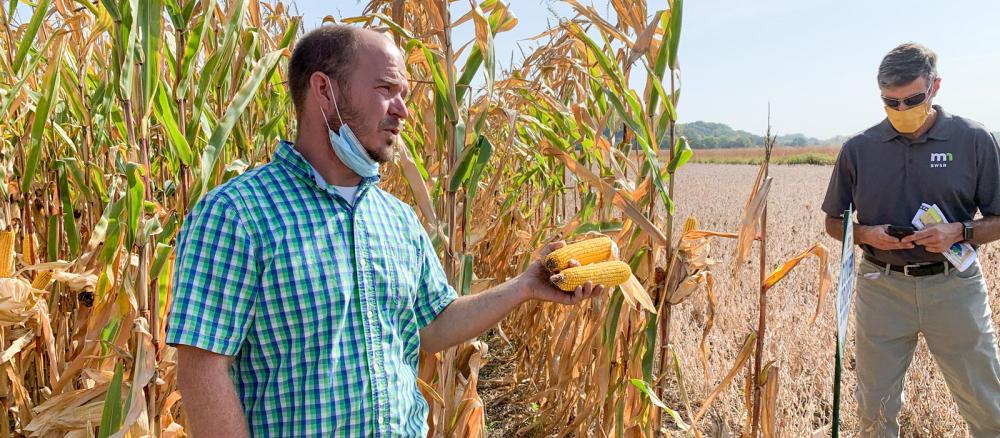Nutrients such as sediment, nitrogen, and phosphorus have caused thousands of water quality impairments in Minnesota waters as well as downstream.
The Minnesota nutrient reduction strategy outlines how Minnesota will reduce nutrient pollution in its lakes and streams, and reduce the impact downstream. The strategy specifies goals and provides a framework for reducing phosphorus and nitrogen levels. Adopted by 11 organizations in 2014, the strategy calls for reducing nutrient levels in major rivers by 10-20% by 2025, with much higher long-term reductions by 2040.
Minnesota can’t meet those goals without the active participation of its farmers. Programs like the Minnesota Agricultural Water Quality Certification Program (MAWQCP) help farmers reduce their nutrient contribution to our waters while improving their bottom line.
Local conservation district experts help farmers identify and mitigate any risks their farm poses to water quality. Producers going through the certification process have priority access to financial assistance for best practices. After being certified, each farm is deemed in compliance with new water quality laws and regulations for 10 years.
As of January 2021, more than 1,000 farms totaling over 705,000 acres have been certified across the state. Minnesota Agricultural Water Quality certified farms have added more than 2,000 new conservation practices, including over 110,000 acres of new cover crops that protect Minnesota’s waters. Those new practices have kept over 38,000 tons of sediment out of Minnesota waters while saving more than 110,000 tons of soil and 48,000 pounds of phosphorous on farms each year. The conservation practices have also reduced nitrogen loss up to 49% and cut greenhouse gas emissions by more than 39,000 tons per year.
Governor Walz has now set a goal of reaching one million certified acres by the end of 2022.
The MAWQCP is funded by the Clean Water Fund, which is derived from one-third of the additional sales tax authorized by the Clean Water, Land, and Legacy Amendment passed by Minnesota voters in 2008. The program is administered by the Minnesota Department of Agriculture (MDA).
Certified farms are deemed in compliance with the new Groundwater Protection Rule that regulates nitrogen use in Drinking Water Supply Management Areas. That is because the requirements for MAWQCP certification are more rigorous than what regulation requires.
There are also extra endorsements available from the MDA to water quality certified producers for soil health, integrated pest management, wildlife, and climate smart farming. These endorsements provide additional recognition for farmers and landowners who are going above and beyond to implement conservation efforts on their land.
According to a study by AgCentric, a program of Minnesota State Colleges Agriculture Centers of Excellence, the average net income of ag water quality certified farms is 26% higher, or $19,000 more per year, than non-certified farms. Other key financial metrics are also better, such as debt-to-asset ratios and operating expense ratios. The study also indicated increased yield for corn, soybeans, and alfalfa on certified land.
The program has a goal to enroll 6.5 million acres and 5,100 Minnesota farms in the program by 2030.
